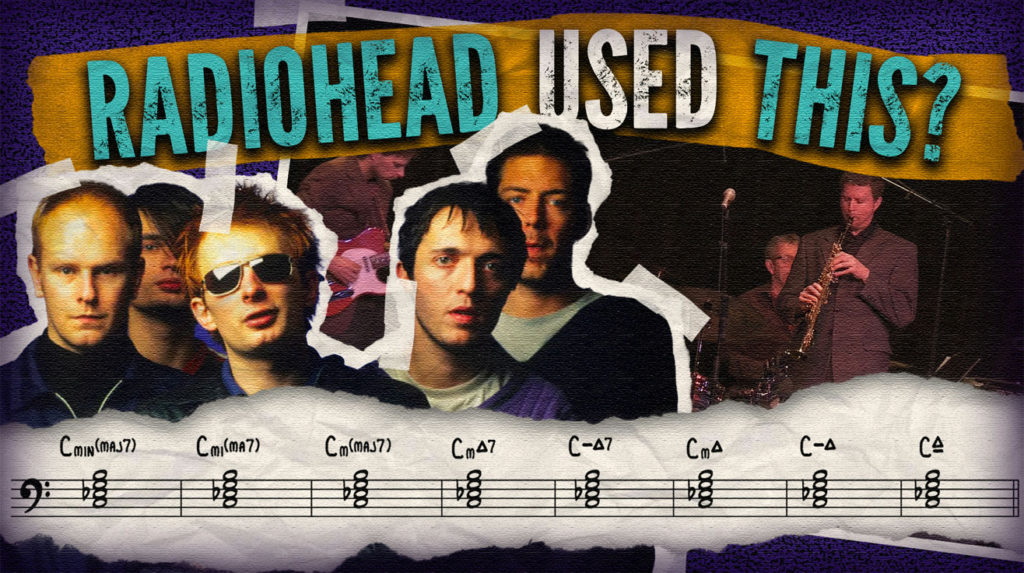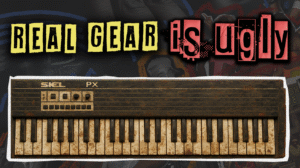
You’re writing a song that needs to sound both melancholy and refined—enter the minor major 7th chord, music’s ultimate harmonic paradox. This four-note combination delivers what conventional harmonies simply can’t: the sonic equivalent of bittersweet chocolate that’s simultaneously comforting and complex.
It’s the secret ingredient behind those moments when familiar music suddenly takes an unexpected turn, creating tension that makes your ears perk up. Whether you’re a bedroom producer or seasoned composer, this chord offers practical magic for expressing contradictory moods.
What Makes This Chord Special?

The minor major 7th chord takes a standard minor triad and adds a major seventh interval—in A minor major 7th, you’re playing A-C-E-G#. That combination creates unmistakable tension between the minor third and major seventh, a harmonic friction that captures complex psychological states conventional chords can’t touch.
This isn’t just music theory jargon; it’s the difference between saying “I’m sad” and expressing the specific melancholy of watching rain through a coffee shop window.
Bernard Herrmann: The Hitchcock Chord Master

Bernard Herrmann deserves credit for popularizing the minor major 7th in film scoring, particularly through his collaborations with Alfred Hitchcock. The chord appears so frequently in their psychological thrillers that some call it the “Hitchcock chord”—though “Herrmann chord” would be more accurate, since the composer was the harmonic genius behind the camera.
From the spiraling unease of “Vertigo” to the persistent dread of “Psycho,” Herrmann understood that harmony could generate tension as effectively as any visual technique. His approach in “Taxi Driver” featured minor major 7th chords that perfectly captured Travis Bickle’s alienation, proving this harmonic device works beyond just suspense films.
The Line Cliche: Jazz’s Stepping Stone

A line cliché occurs when a chord’s top note descends chromatically by semitone, and the minor major 7th serves as a crucial stepping stone in this harmonic journey. This technique appears everywhere from jazz standards to contemporary pop ballads, adding chromatic interest to what might otherwise be simple chord changes.
It’s a composer’s trick for adding psychological weight, similar to a screenplay that reveals character depth through subtext rather than exposition.
Jazz Standards: Where Sophistication Lives

Jazz musicians embraced the minor major 7th as part of their refined harmonic vocabulary, using it to distinguish their music from simpler popular forms. The chord’s complex character fits perfectly within jazz’s tradition of harmonic experimentation, though specific song analyses often require careful verification from original scores.
This harmonic refinement became one tool in an extensive toolkit that allowed jazz musicians to express nuanced feelings through chord progressions alone, proving that sometimes the most powerful statements happen between the notes. For more ways jazz harmony pushes the boundaries, check out these jazz chords that sound great.
Notation: Writing the Contradiction

When notating minor major 7th chords, stick with recognized standards: min△7 (triangle indicates major 7) or m(maj7) work best across different musical contexts. Avoid unconventional notations that might confuse performers—clarity trumps creativity when communicating specific harmonic information.
Min△7 remains the most widely understood notation among musicians, and honestly, your bandmates will thank you for not making them decode your personal chord symbol system during a late-night recording session.
The Beautiful Contradiction That Works

The minor major 7th chord embodies music’s power to express contradictory feelings simultaneously—tense yet beautiful, dissonant yet satisfying. Whether creating psychological depth in film scores or adding polish to bedroom pop productions, this chord delivers harmonic complexity that conventional harmonies cannot match.
For composers seeking to expand their harmonic vocabulary, it offers practical magic for compositional expression that goes beyond the typical major-minor binary we’ve been stuck with since the Renaissance. If you want to take your skills further, explore these steps to improve your musicianship.





















